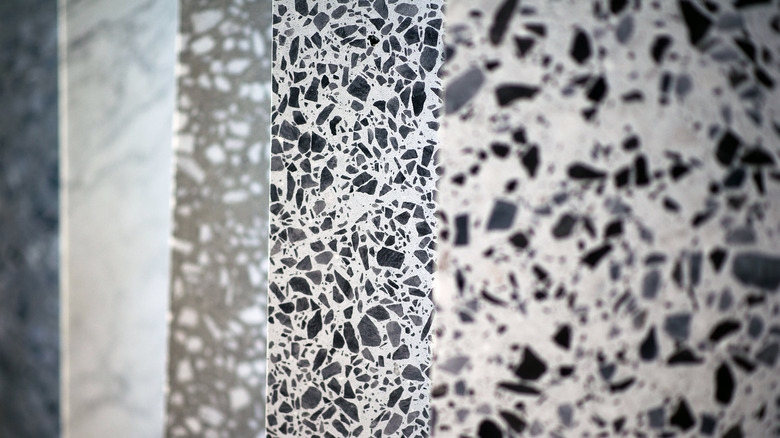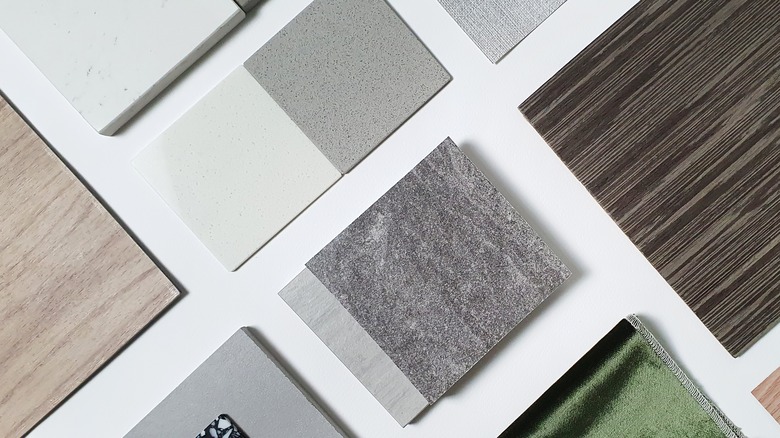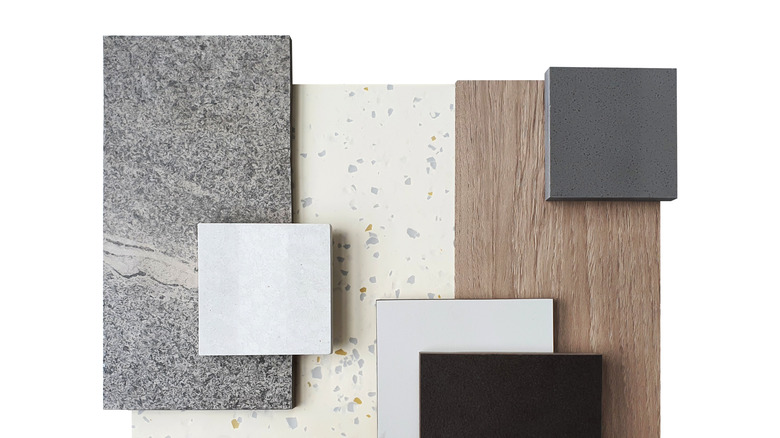How Do You Care For Terrazzo Flooring?
Affordable, durable, and widely available, a terrazzo floor is a classic. You know it when you see it. It's a staple, lending a polished, elegant look to many notable and everyday public buildings (via Mid America Specialty Services), but what exactly is a terrazzo flooring, and how do you go about cleaning and caring for it if you opt for it in your home?
Simply put, terrazzo flooring is a composite, made from chips of natural material and a binding agent. The chips, varying from marble and granite to glass and shell, are generally held together with a binder made from either epoxy or cement. Occasionally, extra chips are scattered on top to achieve a more marbled, Mediterranean feel. And while the chips in the terrazzo are generally sturdier, the binder is more absorbent and subject to staining, particularly in regard to flooring. Luckily, polishing your terrazzo floor likely won't take you as long as you're fearing.
Is Terrazzo Flooring Easy to Maintain?
Terrazzo is a low-maintenance and highly durable flooring option capable of many unique and beautiful finishes to fit your specific tastes (via Rise). Typically, terrazzo flooring has a finishing sealer applied to it, helping the floor remain stain and liquid-resistant. This preventative measure does keep your floor shiny and clean for long stretches of time, however, it will need to be stripped and reapplied semi-regularly. Wax should not be used to coat a terrazzo floor as it can cause the floor to be dangerously slippery, and waxy buildup will dull the floor's polished sheen (via Love To Know).
But over time, even terrazzo-level durability needs a little sprucing up. Luckily, all you're going to need for a surface-level clean is a steam mop. For deeper cleans, however, you're going to want to hire a professional that can properly restore your terrazzo flooring to its former luster.
How to Clean a Terrazzo Floor?
So you want to ensure that your floors look gorgeous for years to come and you're willing to put in the work. But what exactly does "routine maintenance" look like? No surprise, but sweeping is a major benefit. Aside from creating a clean surface for your floors, getting rid of the everyday dirt and grime that our surfaces invite means there's less grit to cause abrasion and damage to your floors (via Rise). Even dust, over time, can build up, so don't be shy about running a dry mop over the terrazzo to keep it pristine.
If it's time to tackle a real mop day, use plain water or a neutral cleaner. The best part is that a lot of the work is actually done sans elbow grease; just mop and let the cleaner set on your floors for a few minutes (not much longer than that though) and let it dissolve the grime. Make sure the floor stays wet, though, so the loose dirt isn't tempted to stick around. Once you've let the cleaner and water combo do the work, you'll still want to give it a good rinse with plain water to make sure everything is removed. Large surface area? Be prepared for a possible second rinse.
Easy enough, but what if you'[re dealing with a stain that goes beyond surface level? For this, you're going to want to hire a floor restoration specialist. Though they may end up having to strip and reapply the sealant, the extra care and attention is worth it for more years of gleaming terrazzo (via Love To Know).


